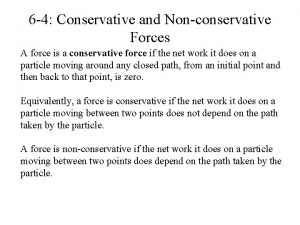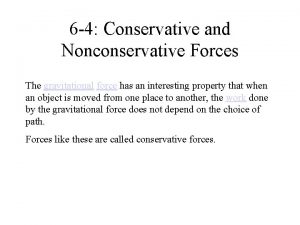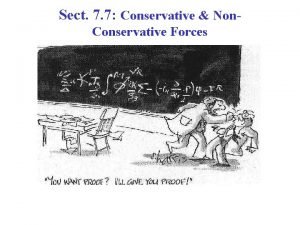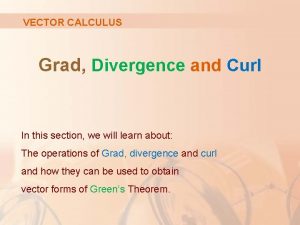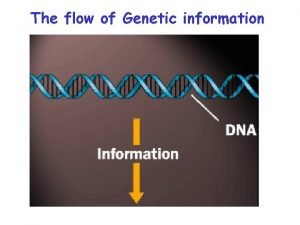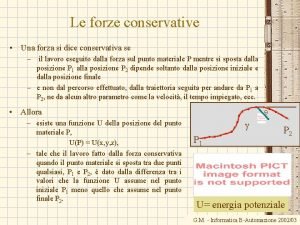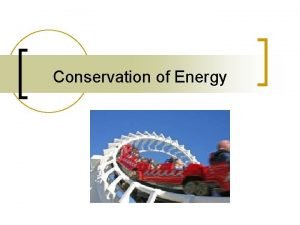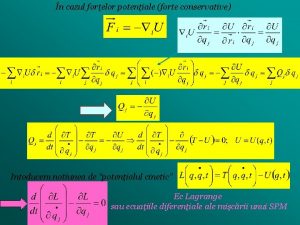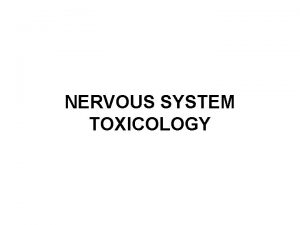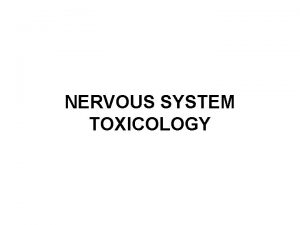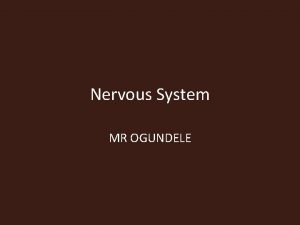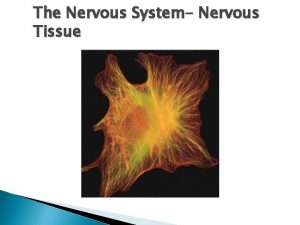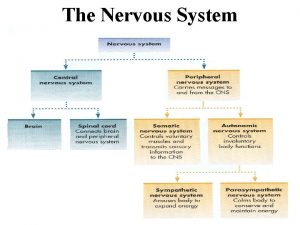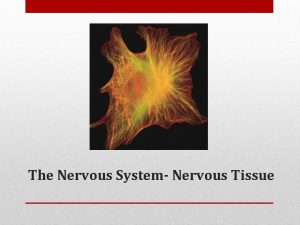Nervous System 1 Nervous system is conservative n




























- Slides: 28

Nervous System 1

Nervous system is conservative n Because of its role, the nervous system is resistant to evolutionary change. n Even if bones change shape, the nerves innervating the muscles must still work. n The system is therefore an ideal comparative tool to help us understand the evolution of vertebrates.

Nervous system is conservative n It does not fossilize, but it does leave its traces, particularly in the skull. n Behavior, psychology, and physiology are all tools we can use to help us decipher the evolutionary and functional history of vertebrates.

Neurons and neuroglia n Neurons – Nerve cell body – Nissl granules contribute to protein synthesis. – Multipolar – many filamentous processes (brain and spinal cord) – Bipolar (nose, eye, ear, and lateral line) – Pseudounipolar (spinal nerves)

Neurons and neuroglia n Dendrites n Axon n Schwann Cells


Neurons and neuroglia n Myelinn n Axon cylinder n Nodes of Ranvier n Neurilemma n Neuroglia



Nerve Impulse and Synapse n There is a potential of 60 m. V across the cell membrane. n Maintained by imbalance of K and Na. n Na outside of cell, K inside. n Excitation is all or none

Nerve Impulse and Synapse n Synaptic Knob n Presynaptic vesicle n Neurotransmitter – Acetylcholine – Noradrenalin – Serotonin – Dopamine – Glutamic Acid – ATP – Nitric Oxide


Tracts, Nerves, and Ganglia n Tracts n White Matter n Grey Matter n Neurilemma (around fiber) n Perineurium (around fascicles) n Epineurium n Ganglia / Plexus

Components n n n n CNS PNS Afferent – sensory Efferent – motor Association neurons Somatic Visceral Autonomic system

Function and Structure: Reflex arcs and Association neurons. Notice intersegmental nature of some fibers.

Function and Structure n n n Dorsal gray columns Ventral gray columns Gray commisure Dorsal funiculus Ventral funiculus Lateral funiculus n Central pattern generators – Modified by brain, but operate w/o brain as well. n Meninges


Evolution of the Spinal Cord n Gray matter – what happens to the organization of white and gray matter in lower and higher vertebrates? n Amniotes – cervical and lumbar enlargements. n Birds – glycogen body in expanded dorsal median sulcus of lumbar region.


Evolution of Spinal Nerves n Amphioxus – Paired dorsal spinal nerves, sensory and motor components, and no ganglia. They are intersegmental. n Lampreys – Intersegmental like amphioxus, but some cell bodies lie outside the cord. – Segmental ventral spinal nerves that contain only somatic motor fibers.

Evolution of Spinal Nerves n Fish and Amphibians – Dorsal and ventral nerves of each segment join outside the vertebral column, thus, one spinal nerve per segment. – Separate dorsal and ventral roots. – Dorsal ramus – structures of epaxial origin. – Vental ramus – structures of hypaxial origin. – Visceral ramus – structures derived from hypomere. – Nerve cell bodies are in dorsal root ganglion.

Evolution of Spinal Nerves n Amniotes – Dorsal and ventral roots of spinal nerves join insdte the vertebral column. – Each dorsal root joins at the same level as the corresponding ventral root, rather than posterior to it. – Usually all visceral motor fibers exit from the cord in the ventral root. So the shift is complete – leaving the dorsal root with only sensory neurons. – Brachial and lumbosacral plexuses are more complex.






 Force conservative et non conservative
Force conservative et non conservative A motorcyclist is trying to leap across the canyon
A motorcyclist is trying to leap across the canyon The force of gravitation is conservative or nonconservative
The force of gravitation is conservative or nonconservative Conservative force definition
Conservative force definition Neuron process
Neuron process Fundamentals of the nervous system and nervous tissue
Fundamentals of the nervous system and nervous tissue Fundamentals of the nervous system and nervous tissue
Fundamentals of the nervous system and nervous tissue Nervous system and digestive system
Nervous system and digestive system Endocrine system and nervous system
Endocrine system and nervous system Endocrine vs nervous system venn diagram
Endocrine vs nervous system venn diagram Endocrine system and nervous system
Endocrine system and nervous system Curl of vector in cylindrical coordinates
Curl of vector in cylindrical coordinates Force conservative
Force conservative Thinking algebraically stock market game answer key
Thinking algebraically stock market game answer key 3-5 exonuclease vs 5-3 exonuclease
3-5 exonuclease vs 5-3 exonuclease Activity sheet 2 stock market calculations answer key
Activity sheet 2 stock market calculations answer key Perennialism characteristics
Perennialism characteristics Elliot separator principle
Elliot separator principle Forza conservativa
Forza conservativa Forze dissipative e conservative
Forze dissipative e conservative Principle of curriculum construction
Principle of curriculum construction Forms of energy?
Forms of energy? Conservative america in the ascent
Conservative america in the ascent Undermined enamel vs unsupported enamel
Undermined enamel vs unsupported enamel Physics 03-06 impulse and momentum answer key
Physics 03-06 impulse and momentum answer key Poteniale
Poteniale Is electric force a conservative force
Is electric force a conservative force Burs used for tooth preparation
Burs used for tooth preparation Conservative criminology
Conservative criminology

